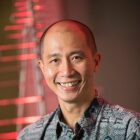Project area/S
- Radio Instrumentation for Epoch of Reionisation
- Cosmic Dawn detection
Project Details
The Cosmic Microwave Background i.e. the relic radiation from the Big Bang is the oldest electromagnetic radiation in the Universe. It is observed to be a thermal blackbody at a 2.725K between 30-600 GHz. At lower radio frequencies, the CMB temperature is expected to deviate from a blackbody and exhibit a specific spectral signature that resulted from the Cosmic Dawn (CD) and the Epoch of Reionization (EoR) – the time in the cosmic history when the sources of first light began to shine. However, at these frequencies CMB temperature measurement is increasingly difficult due to instrumental complexity and galactic and extragalactic radiation that are at least 3 orders of magnitude brighter than the CMB. Over a dozen experiments attempted to detect the redshifted 21cm signal using the single element radio telescope over the past decade with only two producing any data of scientific significance.
This project aims to detect the signatures of CD/EoR by a precision radio background measurement between 30-150MHz. For a future doctoral candidate in Radio Astronomy instrumentation, it provides a unique opportunity to operate and understand a single element radio telescope and training in RF instrumentation.
Student Attributes
Academic Background
Bachelor’s or Master’s degree in Electronics and Telecommunication/Electrical Engineering/ Experimental physics/astrophysics.
Computing Skills
Programming skill in python or C is necessary.
Training Requirement
Familiarity with basics of RF instrumentation, basics of measurement methods and techniques, ability to operate digital and analog spectrometer, network analyzer are needed. The student will also be supported and trained in these field so that they develop specific expertise at the end of the training.
Project Timeline
- Week 1 Inductions and project introduction
- Week 2 Initial Presentation
- Week 3 End to end telescope response simulation using antenna simulation, and RF component response measurements
- Week 4 End to end telescope response simulation using antenna simulation, and RF component response measurements
- Week 5 Generate all-sky maps between frequencies 30-150 MHz using GSM, and GMOSS. Using these maps, telescope response and various reionization models, simulate the continuum sky spectrum to be observed by the telescope.
- Week 6 Apply various analysis techniques to the simulated data set and determine which reionization model is detectable by this particular telescope given its instrument response.
- Week 7 Apply various analysis techniques to the simulated data set and determine which reionization model is detectable by this particular telescope given its instrument response.
- Week 8 Apply various analysis techniques to the simulated data set and determine which reionization model is detectable by this particular telescope given its instrument response.
- Week 9 Final Presentation
- Week 10 Final Report
